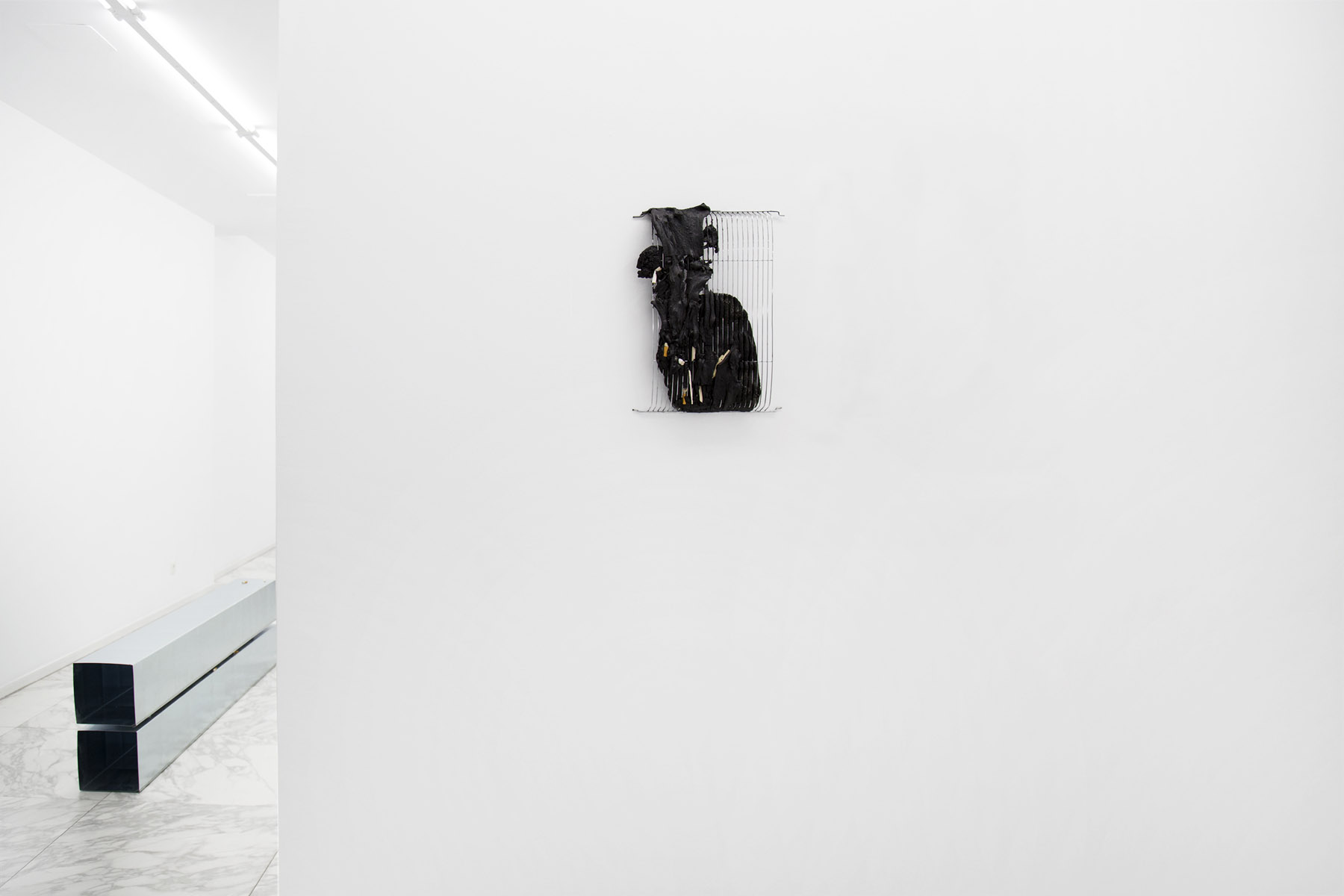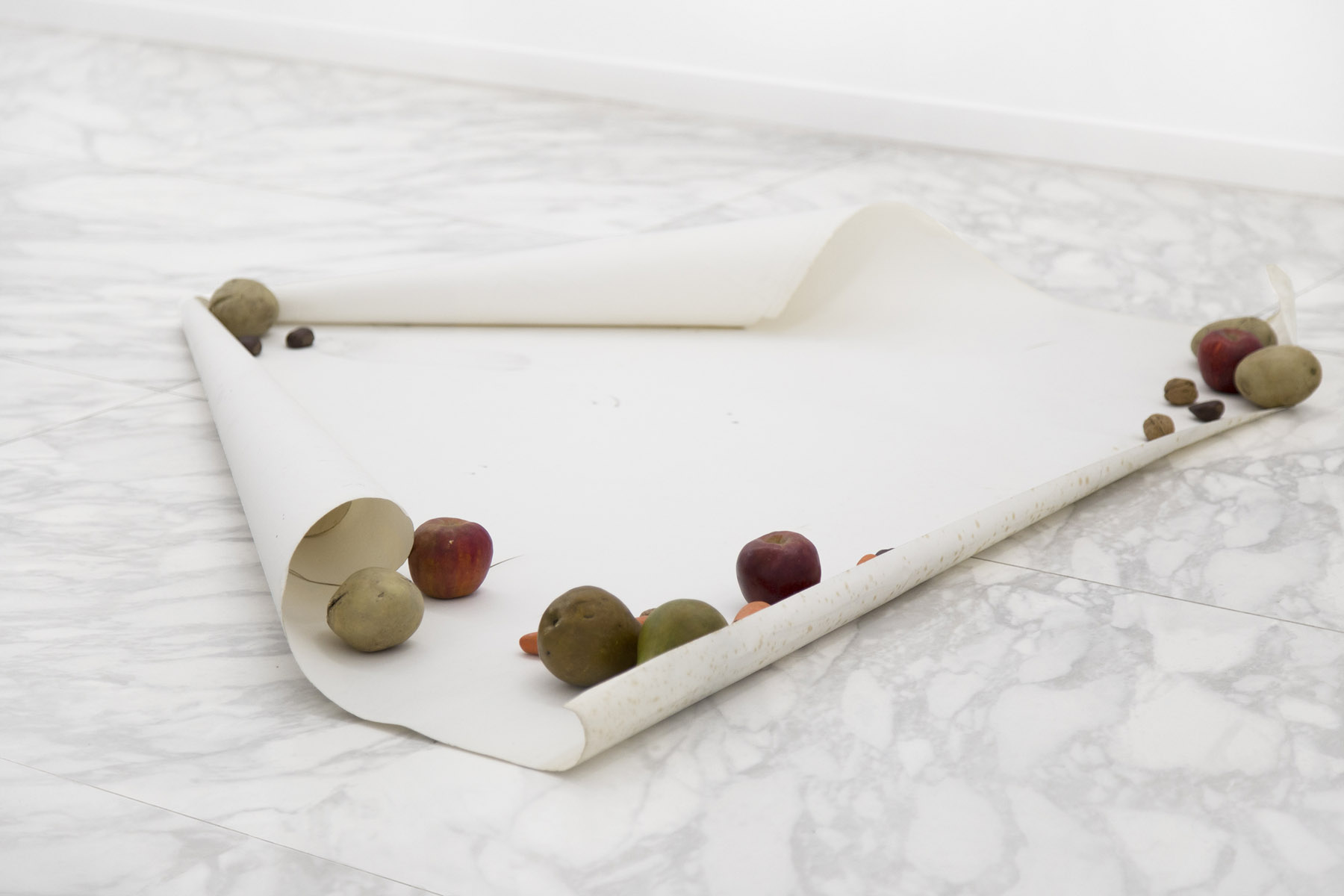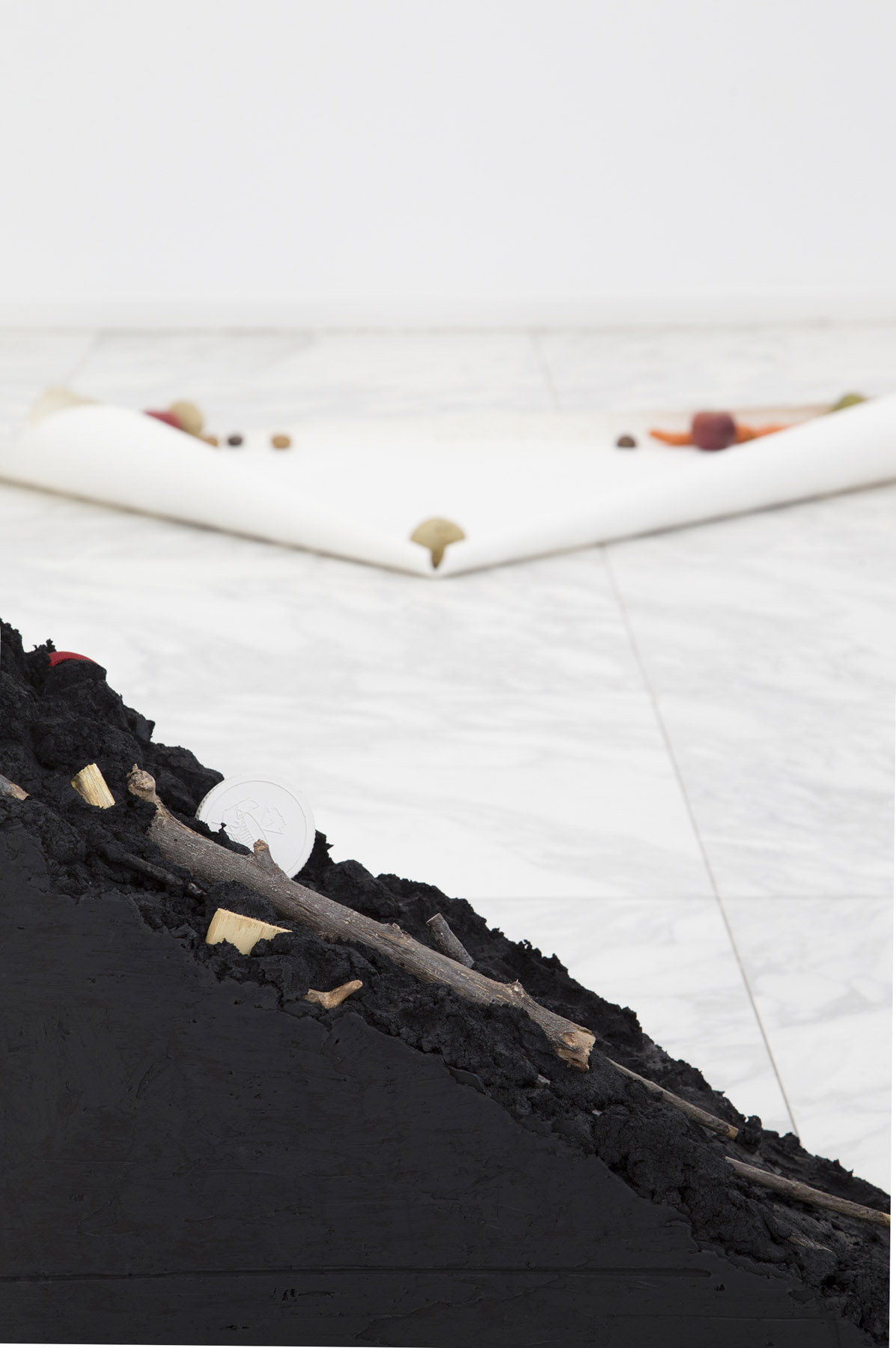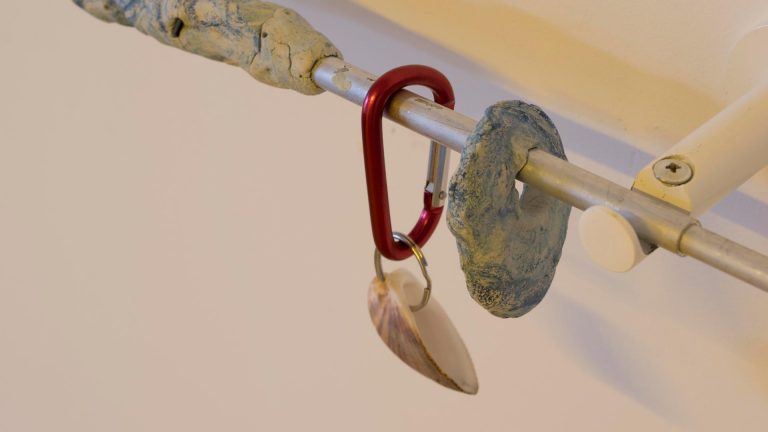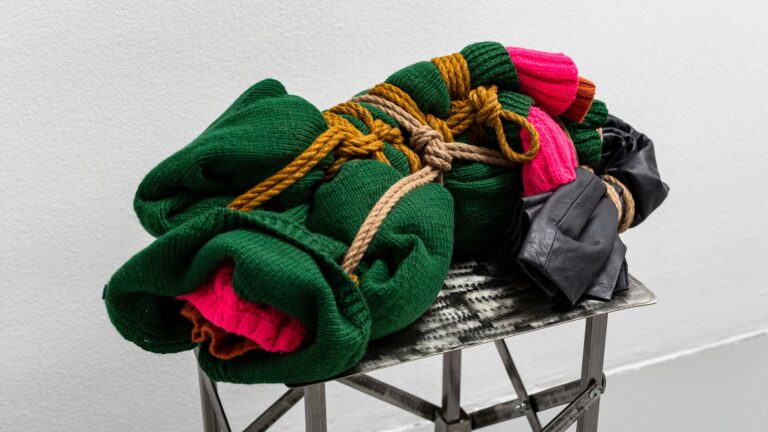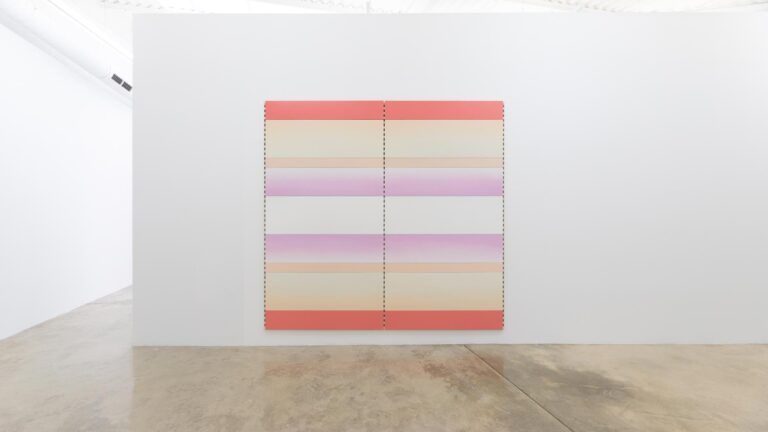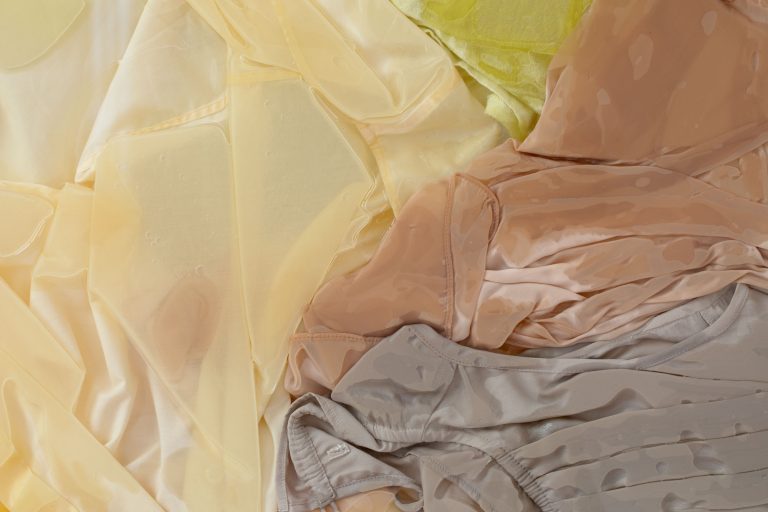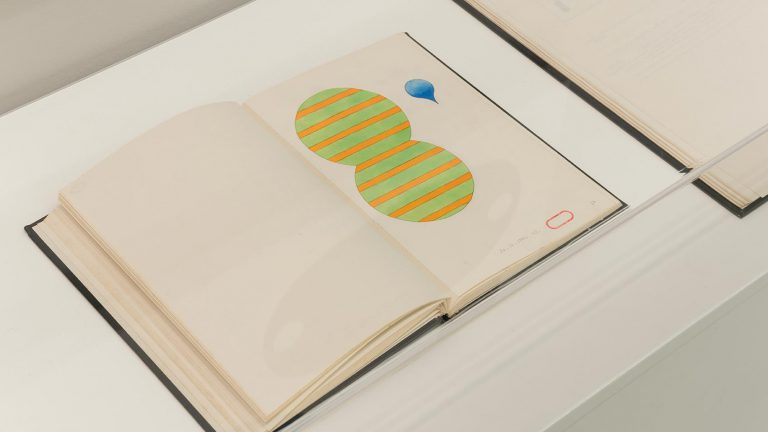Artist: José Ramón Amondarain
Exhibition title: A tientas
Venue: CIBRIÁN, San Sebastian, Spain
Date: September 17 – November 28, 2020
Photography: all images copyright and courtesy of the artists and CIBRIÁN, San Sebastian
CIBRIÁN is pleased to announce the gallery’s first solo exhibition of José Ramón Amondarain. He has been an outstanding artist on the Spanish art scene for decades and belongs to a generation that marks a watershed moment in the art history from the second half of the 20th century. It is important to look back to understand the impact this generation have had, especially in painting.
This turning point probably began in the early 1980’s with appropriationism, an underestimated movement in view of the recent history of painting. Let’s take, for instance, the work of Sherrie Levine who at that time began to reproduce modernist paintings with reduced scale in watercolors. This gesture literally showed us the different states of the image through painting, questioning of course the idea of the author. Levine’s watercolor works are all at once: copies, re-enactments, watercolors and originals. All these states are encapsulated in the painting. We are in front of a transfer that converts content into image, and image into information. This change in the reading of the painting puts the subject on the same level as the rest of the pictorial components. Davil Joselit articulated this change when he wrote : “(…)the abstract gesture now marks the transfer of information rather than the production of new information itself – which was the territory claimed by Abstract Expressionism.” ¹
The possibility to consider the subject as an information within the field of painting brought about a radical change. José Ramón Amondarain, driven by digital advancement, embraced this question in a unique and extensive way. Since then, painting widely included processes of reproduction, screens, decontextualized images, erased or, on the contrary, repeated to the point of becoming abstract patterns. Therefore, it works as a transmitter that alters information in a unique way and adds to the traditional pictorial matter such as color, shape, etc. These characteristics that define Amondarain’s work, and that echo the work of his contemporaries, are not purely innocent. It cannot be reduced to the term post-modernism either. It is rather a new approach to work within a medium whose death is predicted every ten years. Transferring and manipulating information, even unimportant, is a politically charged gesture. The questions raised by such manipulations far exceed the field of painting : Who has access, technologically or intellectually, to what? What is the temporality and long term accuracy of this information? etc. The artist evolves in parallel with these questions. Groping.
José Ramón Amondarain reaffirms his understanding of painting as an object of investigation to overflow, which can be extended beyond its own limits. The exhibition space, even the creative process itself can also become resources for the artist (the temperas of A tientas are an example of this). The idea of expanded painting unfolds here through various sculptures and installations. The visible mass that links the loose sculptures, the padlocks that seem to keep the secret of their own existence or the installation made with industrial material and artifacts, is the black oil; the binder. It is a dirty and contingent matter since it benefits from an infinite network of representations. A material that, in addition to containing all the possibilities of painting, has a physical function here. It can be sculpture: bone, cement… and of course painting, its primary function. This double register is very present in this exhibition and is not harmless. Painting infiltrates reality by confronting what is commonly accepted as the relationship between reality and its representation.
It is painting itself, that last refuge of the mythology of individuality which can be seized to deconstruct the illusion of the present. For since painting is intimately concerned with illusion, what better vehicle for subversion? ²
To grope, if we remove the sexual connotation, alludes to a mode of knowledge by contact that is reflected in the empirical approach that José Ramón Amondarain gives to painting in its relationship with the touch, the haptic perception; in which he fully trusts. This approach goes against the impoverishment of the visual experience that we know. In fact, we live overwhelmed with images that constantly reach us before we have made the decision to see them, adopting a passive attitude in the face of the multiplicity of options that are offered to the viewer at all times. This alienation of images can only be counteracted by temporarily abandoning the sense of sight. In this case it is José Ramón Amondarain, a painter, who take the measure of the tactile experience to enrich the aesthetic experience.
1 David Joselit, Signal Processing : Abstraction then and now. ( ARTFORUM summer 2011).
2 Thomas Lawson, Last Exit: Painting (1981) p.64 in Thomas Lawson Mining for gold Selected writtings (1979-1996).
José Ramón Amondarain, A tientas, 2020, exhibition view, CIBRIÁN, San Sebastian
José Ramón Amondarain, A tientas, 2020, exhibition view, CIBRIÁN, San Sebastian
José Ramón Amondarain, Untitled, 2020, Iron and polyester, 51 x 24 x 200 cm
José Ramón Amondarain, Untitled, 2020, Iron and polyester, 51 x 24 x 200 cm
José Ramón Amondarain, Untitled, 2020, Iron, oil and polyester, 79 x 24 x 200 cm
José Ramón Amondarain, Untitled, 2020, Iron, oil and polyester, 79 x 24 x 200 cm
José Ramón Amondarain, Untitled, 2020, Iron, oil and polyester, 79 x 24 x 200 cm
José Ramón Amondarain, Untitled, 2020, Tempera on paper, 45 x 30,5 cm
José Ramón Amondarain, A tientas, 2020, exhibition view, CIBRIÁN, San Sebastian
José Ramón Amondarain, Untitled, 2020, Iron, oil and polyester, 40 x 31 x 4cm
José Ramón Amondarain, Untitled, 2020, Iron, oil and polyester, 40 x 31 x 4cm
José Ramón Amondarain, Untitled, 2020, Aluminium, oil and polyester, 52 x 179 x 10 cm
José Ramón Amondarain, Untitled, 2020, Aluminium, oil and polyester, 52 x 179 x 10 cm
José Ramón Amondarain, Untitled, 2020, Aluminium, oil and polyester, 52 x 179 x 10 cm
José Ramón Amondarain, Untitled, 2020, Aluminium, oil and polyester, 52 x 179 x 10 cm
José Ramón Amondarain, Untitled, 2020, Tempera on paper, 30,5 x 45 cm
José Ramón Amondarain, 2020, paper and painted polyester, 112 x 140 x 10 cm
José Ramón Amondarain, 2020, paper and painted polyester, 112 x 140 x 10 cm
José Ramón Amondarain, 2020, paper and painted polyester, 112 x 140 x 10 cm
José Ramón Amondarain, 2020, paper and painted polyester, 112 x 140 x 10 cm
José Ramón Amondarain, A tientas, 2020, exhibition view, CIBRIÁN, San Sebastian
José Ramón Amondarain, Untitled, 2020, Iron, oil and polyester, 90 x 72 x 30 cm
José Ramón Amondarain, Untitled, 2020, Iron, oil and polyester, 90 x 72 x 30 cm
José Ramón Amondarain, A tientas, 2020, exhibition view, CIBRIÁN, San Sebastian
José Ramón Amondarain, Untitled, 2020, Tempera on paper, 30,5 x 45 cm
José Ramón Amondarain, A tientas, 2020, exhibition view, CIBRIÁN, San Sebastian
José Ramón Amondarain, Untitled, 2020, Padlocks, keys, polyester, lead, bronze, oil, plastic, Variable dimens
José Ramón Amondarain, Untitled, 2020, Padlock, oil, polyester, fiberglass, 11 x 66,5 x 97 cm
José Ramón Amondarain, Untitled, 2020, Padlock, polyester, oil, 9,5 x 5,7 x 9,5 cm
José Ramón Amondarain, Untitled, 2020, Padlock, key, lead, bronze, 32 x 9 x 1,2 cm
José Ramón Amondarain, Untitled, 2020, Tempera on paper, 30,5 x 45 cm
José Ramón Amondarain, Untitled, 2020, Tempera on paper, 30,5 x 45 cm
José Ramón Amondarain, Untitled, 2020, Tempera on paper, 30,5 x 45 cm
José Ramón Amondarain, Untitled, 2020, Tempera on paper, 30,5 x 45 cm
José Ramón Amondarain, Untitled, 2020, Tempera on paper, 30,5 x 45 cm
José Ramón Amondarain, Untitled, 2020, Tempera on paper, 30,5 x 45 cm
José Ramón Amondarain, A tientas, 2020, exhibition view, CIBRIÁN, San Sebastian
José Ramón Amondarain, A tientas, 2020, exhibition view, CIBRIÁN, San Sebastian










